By Mumtaz Alam Falahi, TwoCircles.net
TCN Series: Visit to Malda and Murshidabad : Part 3
The cities of Malda and Murshidabad alternatively were the capital of the undivided Bengal (that included Bihar and Orissa also) for about 700 years – from the conquest of Bakhtiar Khilji in 1201 of Bengal till 1881 when Nawab Syed Mansur Ali Khan (known as Feradun Jah), son of Nawab Mubarak Ali Khan (known as Humayun Jah), retired as the last Nawab of the state.
The two cities still have palaces, official buildings and mosques – mostly in ruins – that give enough clues to the grandeur of the Muslim empire – run first by Afghan rulers, then Mughals and then Nawabs who most of the period ruled under the Mughal Empire in Delhi.
Historic places in Malda
Malda is the gateway of North Bengal and two cities of Malda, Gour and Pandua, had been the capital of Bengal in ancient and medieval ages. They are at equidistance in opposite direction, north and south, from today’s main town of Malda district, English Bazar. For long after Bakhtiyar Khilji conquered Bengal in 1201 AD, Malda remained the capital of Bengal. That’s why we find several Muslim monuments and mausoleums of some the rulers of that time.
Adina Mosque or Jami Masjid
Said to be the largest mosque in India, the Adina Mosque or Jami Masjid in Adina area, some 15 km from Malda town, was built in 1369 by Sultan Sikander Shah. The design of the mosque is said to be based on the great 8th century mosque of Damascus. According to Archaeological Survey of India (ASI), the mosque, the largest Islamic monument in the whole of Bengal, has some architectural members of some earlier structures including some temples.
The mosque has a large rectangular open courtyard surrounded by rows of arches and domes. On the north of the beautifully decorated Mehrab is a raised platform reserved for women. Adjacent to the western wall of the mosque is a projected chamber where Sikandar Shah is said to have been buried.
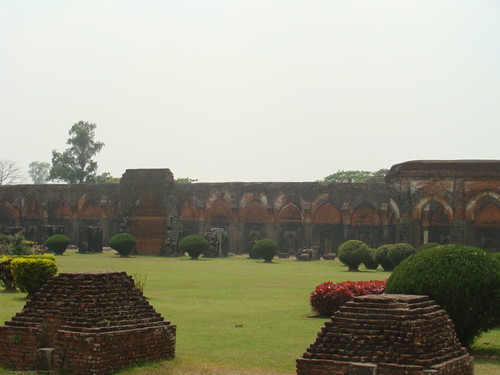
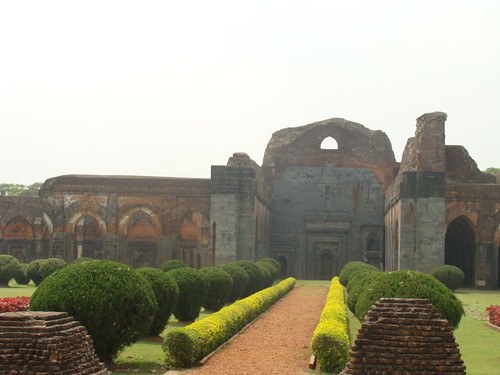
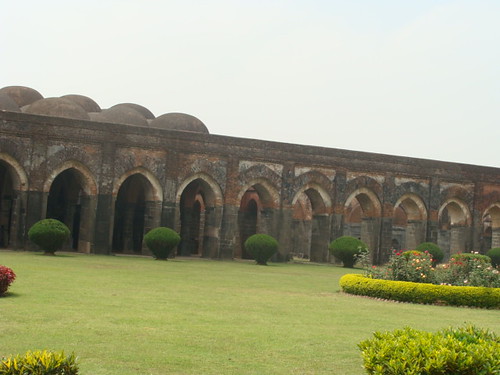
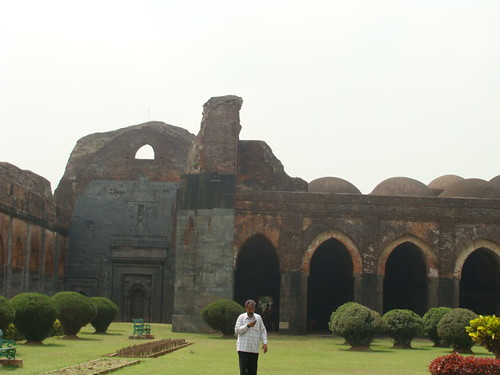
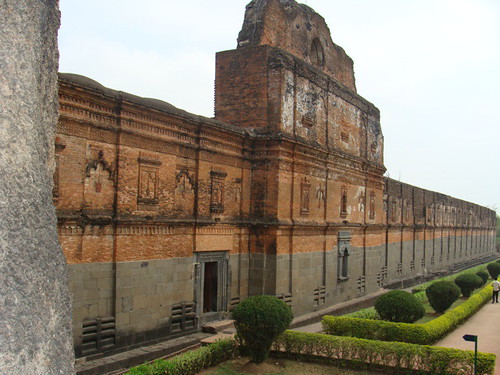
Qutub Shahi Mosque or Sona Masjid
The double aisled mosque Qutub Shahi Mosque or Sona Masjid has ten domes. It was built in the honour of saint Nur Qutub-e-Alam, son of saint Makhdoom Alaul Haque Pandvi, by Makhdum Shaikh, the descendant and follow of the saint. The mosque was known as Sona Masjid due to its earlier gilded wall surface and crowns of the turrets.
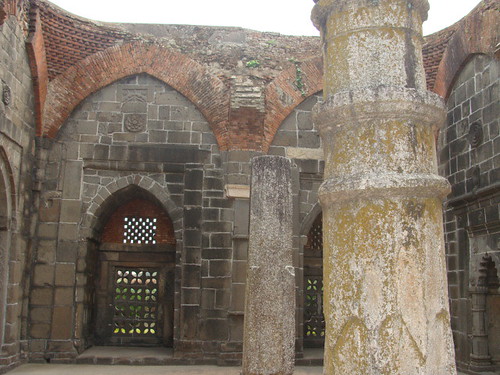


Eklakhi Masoleum

The Eklakhi Mausoleum is said to be the most elegant monument in Pandua. One of the first square brick tombs in Bengal, with a carved Ganesh on the doorway, it is the tomb of Jalaluddin, the convert son of King Ganesh. After the defeat of Ganesh, Jalaluddin ascended to the throne. The mausoleum also has grave of his wife and son.
Besides, there are several other historical places in Malda. They include Shahi Jama Masjid in Old Malda.

Historic places in Murshidabad
At the beginning of the Nawab era, Nawab Murshid Quli Khan made Maksudabad his capital in 1704 and renamed it as Murshidabad after his name. Barring some years, the city remained capital of the Nawab rule for almost 200 years.
Katra Mosque

The Katra Mosque, oldest and most imposing Islamic architecture in Murshidabad, is raised on a lofty platform. It was built by founder of Murshidabad, Nawab Murshid Quli Khan (1706-1725 AD) in 1723 AD. The mosque has huge domes and high minarets. It has the grave of Nawab Murshid Quli Khan below the front staircase. It is said to have been a great centre of Islamic learning.
Hazarduari Palace
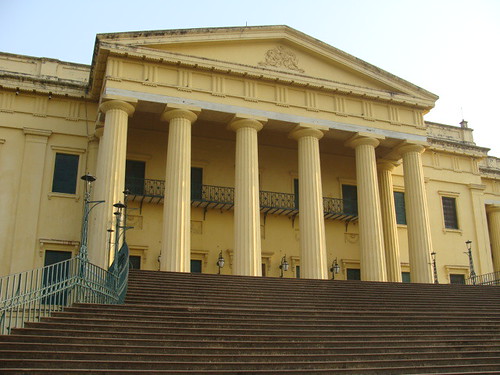
The foundation stone of the Hazarduari Palace (it means the palace with a thousand doors) was laid in 1829 by Nawab Humayun Jah, descendent of Mir Zafar, in the presence of the representative of the then Governor General. It was completed in 1837. The three-storey palace was designed by Colonel Duncan M Leod of the Bengal Corps of Engineers and executed entirely by natives.
The Hazarduari Palace spreading over 41 acres has thousand doors (among which only 900 are real) and 114 rooms and 8 galleries. It has been built in European architectural style. The Palace was used by Nawabs for official work. It also was the residence of the high ranking British officials.
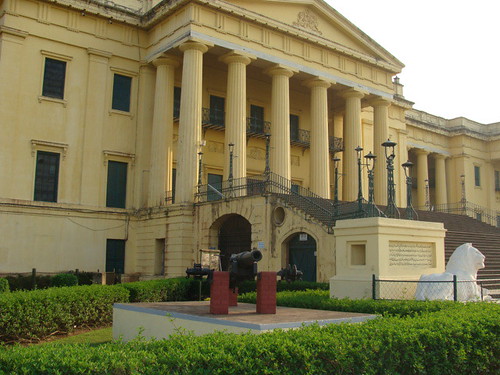
The palace is now a museum which has a collection of armoury, paintings, portraits of the Nawabs and various works of art including works of ivory.
Parallel to the Hazarduari Palace, on the northside is the Nizamat Imambara. It was built in 1847 by Nawab Mansoor Ali Khan (known as Feradun Jah), son of Humayun Jah. This was built after the Imambara built by Siraj-ud-Daula had been destroyed by fire
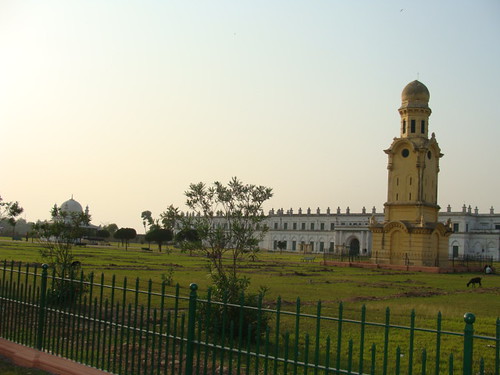
Between the palace and the Imambara is a small mosque called Madina. The mosque has a replica of Masjid-e-Nabawi in Madina of Saudi Arabia.
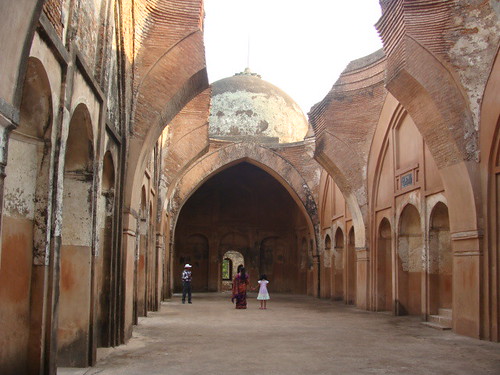
Slide show:

